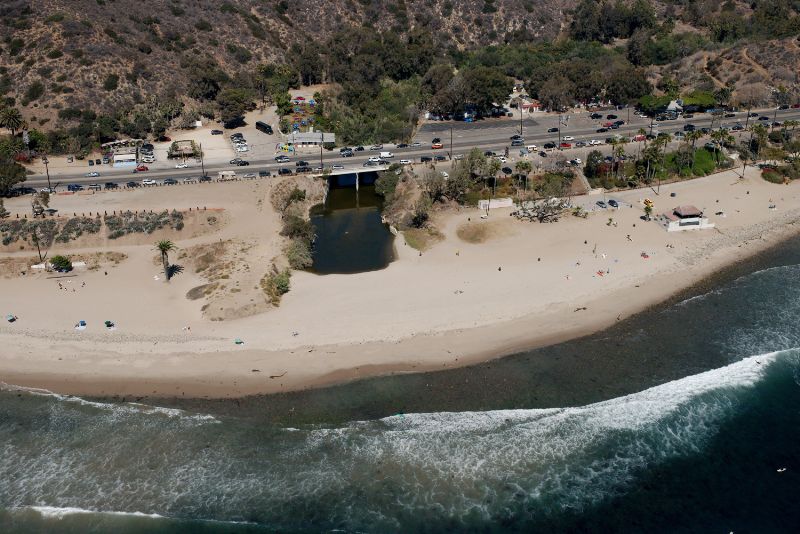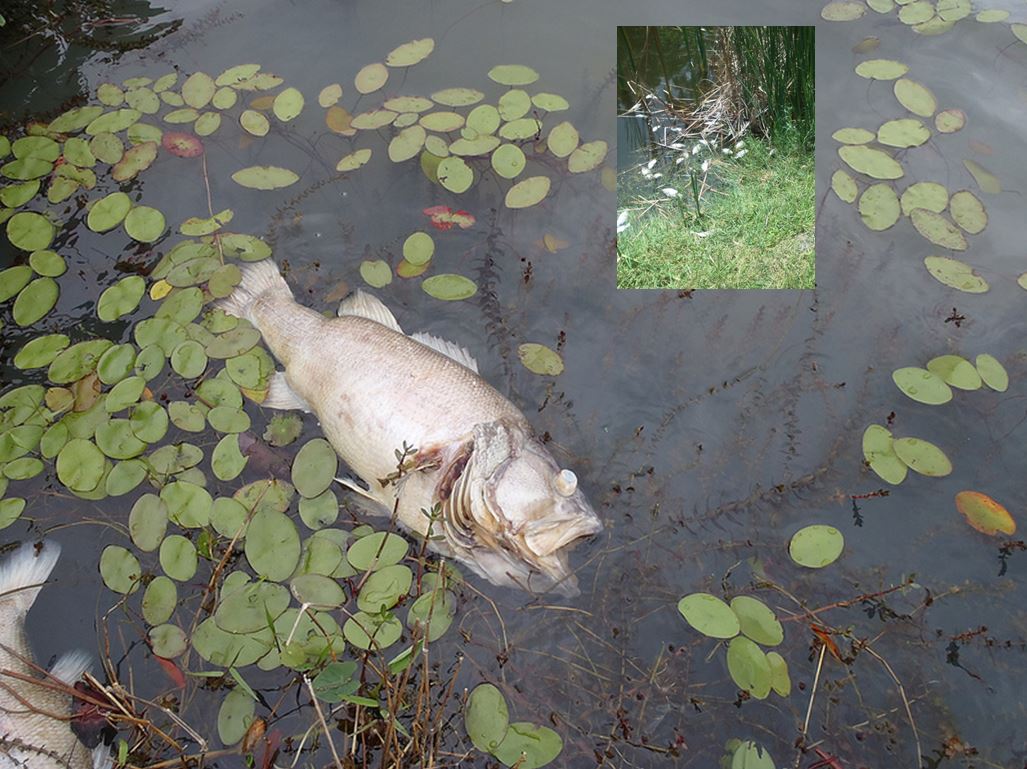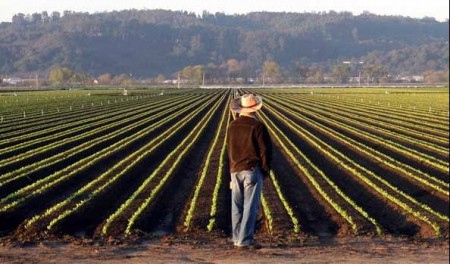Now that you are familiar with stormwater runoff, let’s take a look at a few real-life examples of its effects [if you missed Part I, be sure to check it out for a full explanation of stormwater runoff]:
1) Beach Closures due to High Bacteria Levels.
When stormwater runs through the environment, it picks up everything in its path, including viruses and bacteria. During any precipitation event, the amount of bacteria present in the water is highly concentrated, making it dangerous not only for humans, but for the species that inhabit each body of water involved.
For example, let’s look at Topanga County Beach in Los Angeles, CA. The Topanga Creek mouth dispels stormwater runoff into the ocean at this beach, causing bacteria levels to skyrocket with each precipitation event. This beach has received a failing grade for 6 out of 12 tests this year alone regarding water safety [source].
 [Photo Credit: Topanga Copyright © 2002 – 2014 Kenneth & Gabrielle Adelman, California Coastal Records Project, www.californiacoastline.org]
[Photo Credit: Topanga Copyright © 2002 – 2014 Kenneth & Gabrielle Adelman, California Coastal Records Project, www.californiacoastline.org]
2) Fish Kill due to Water Pollution.
While phosphorous and nitrogen are naturally part of our environment, high quantities of either element can create a deadly scenario. Stormwater picks up these nutrients when it runs over fertilizer, leaves, pollen, or animal manure. Faulty septic systems can also contribute phosphorous and nitrogen into our environment. The two nutrients fuel algae growth, which can quickly disrupt the natural habitat and degrade water quality. Large algae blooms block sunlight from the oxygen-producing plants under the surface, depleting water of this crucial element. Without oxygen, aquatic life cannot survive.
Some algae varieties can produce deadly toxins, such as the blue-green algae bloom reported last week in Ocala, Florida. Thousands of fish are dead due to high levels of cyanobacteria in Lake Weir. The culprits? Fertilizer and septic tank overflows brought to the lake via stormwater runoff.
[Photo Source]
3) Groundwater Depletion.
In some places around the world, groundwater is being used faster than it can naturally be replenished. While this situation is caused by multiple factors, stormwater runoff is also to blame. Over time, urban development has disrupted the natural hydrologic cycle and enough rain is not being absorbed by the soil and or making its way to underground aquifers. This process takes time and it takes even more time when rain is channeled away from the ground it lands on.
In California, for example, groundwater has been over-tapped for use in agriculture and human consumption. Aquifer levels are so low in some areas of the state that seawater is seeping in from the ocean, making the resource near impossible to use. Last month it was reported that the situation has become so dire in the Pajaro Valley, that some farmers are forced to rely solely on delivered water to grow their crops, which will only make the problem worse [source].
[Photo Source]
4) Soil Erosion and Sediment Pollution.
Stormwater runoff can cause rapid soil erosion in two different scenarios, both of which lead to sediment pollution. The first example of soil erosion happens anytime the open ground, such as that of a construction site, is subjected to precipitation events. Rain falls on the soil, and carries it away because there are no trees or plants to hold it in place. Soil erosion also occurs when fast-moving stormwater is funneled in to our rivers and streams. Such volumes of water rushing through these water bodies are likely to cause an accelerated rate of riverbed erosion.
Sediment pollution occurs when eroded soil is deposited in our lakes, rivers and streams. Sediment causes cloudy, or turbid, water and eventually destroys fish spawning grounds and other aquatic habitats.
For the last three years, a non-profit organization called Huron Pines has worked hard to restore the Pine River in Northeast Michigan. The South Branch of the Pine River “provides quality coldwater fish habitat for brook, brown and rainbow trout as well as the occasional steelhead, seasonal salmon and northern hogsucker” according to the Huron Pines website. Unfortunately, the wildlife was put in danger when eroding stream banks created unstable habitats along the river. Large portions of soil were washed downstream, posing a threat to those habitats as well.
[Photo Source]
As you can see, the effects of stormwater runoff are many and they impact us all. Thus, we feel that everyone has a part to play in reversing these damaging consequences and preventing future problems. Stay tuned for Part III of this series, as we will discuss how YOU can do your part to protect our precious environment.
If you have questions in the meantime, feel free to connect with us on Facebook, Twitter, LinkedIn, or Google +.




Deprecated: Function get_magic_quotes_gpc() is deprecated in D:\Inetpub\vhosts\rainharvest.com\httpdocs\blog\wp-includes\formatting.php on line 3603
Deprecated: Function get_magic_quotes_gpc() is deprecated in D:\Inetpub\vhosts\rainharvest.com\httpdocs\blog\wp-includes\formatting.php on line 3603
Deprecated: Function get_magic_quotes_gpc() is deprecated in D:\Inetpub\vhosts\rainharvest.com\httpdocs\blog\wp-includes\formatting.php on line 3603